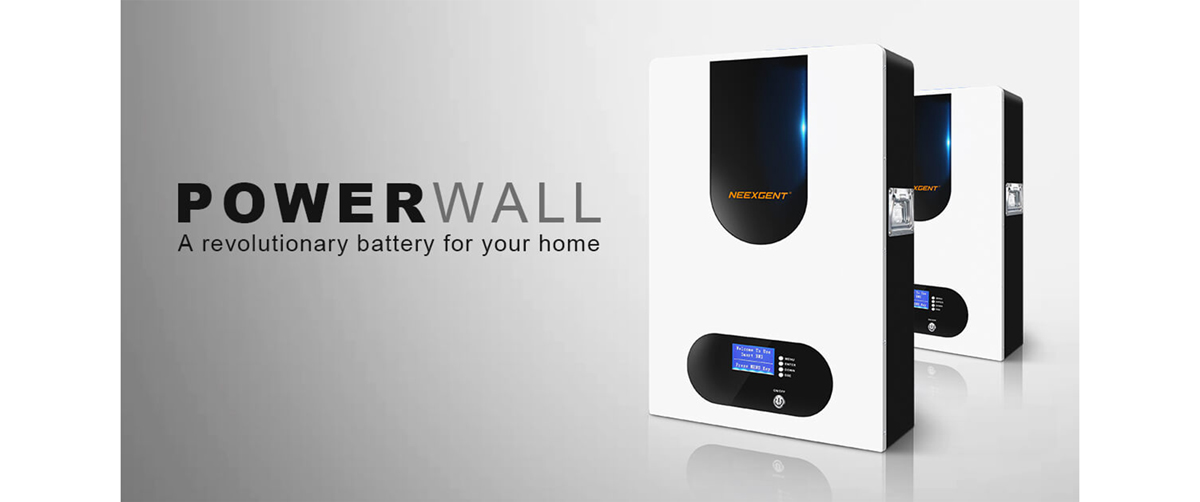Access to reliable and affordable electricity remains a significant challenge across many parts of Africa. However, with the advancements in renewable energy technologies and energy storage systems, there is a promising solution on the horizon. Wall-mounted batteries have the potential to revolutionize the energy landscape in Africa by providing clean, decentralized power and addressing the pressing need for electrification. In this article, we will explore the advantages, opportunities, and challenges associated with wall-mounted batteries in Africa, highlighting their potential to drive sustainable development and improve the lives of millions.

NEEXGENT NX-48100 Powerwall Battery
1. The Need for Energy Access in Africa:
Africa is home to a large population that lacks access to electricity, with over 600 million people living without reliable power sources. Limited access to electricity hampers economic growth, healthcare services, education, and overall quality of life. Wall-mounted batteries can play a pivotal role in bridging this energy gap by providing localized, off-grid or hybrid power solutions.
2. Advantages of Wall-Mounted Batteries in Africa:
- Off-Grid Power Solutions: In remote areas where grid infrastructure is limited or non-existent, wall-mounted batteries combined with renewable energy sources, such as solar or wind, offer a reliable off-grid power solution. These batteries store energy during periods of generation and provide electricity during times of low or no renewable energy production, ensuring a continuous power supply for households, schools, healthcare facilities, and small businesses.
- Grid Stability and Load Management: In regions with existing electricity grids, wall-mounted batteries can improve grid stability and load management. By storing excess energy during low-demand periods and releasing it during peak hours, these batteries help balance the supply and demand, reducing strain on the grid and minimizing the risk of blackouts or power fluctuations.
- Resilience and Emergency Power: Wall-mounted batteries provide a vital backup power solution during emergencies and natural disasters. They can support critical infrastructure, such as hospitals, communication networks, and emergency response centers, ensuring that essential services continue to operate even in challenging circumstances.
- Clean and Sustainable Energy: With an abundant solar resource, Africa has tremendous potential for renewable energy generation. Wall-mounted batteries enable the efficient storage and utilization of this clean energy, reducing reliance on fossil fuels and contributing to environmental sustainability. By promoting clean energy adoption, wall-mounted batteries in Africa can help combat climate change and reduce harmful greenhouse gas emissions.

3. Overcoming Challenges and Seizing Opportunities:
- Affordability and Financial Models: One of the primary challenges in deploying wall-mounted batteries in Africa is the upfront cost. However, falling battery prices, advancements in technology, and innovative financial models, such as pay-as-you-go systems or leasing options, are making these systems more accessible to communities and businesses with limited capital.
- Supply Chain and Infrastructure: Establishing robust supply chains for batteries and related components is crucial to ensure reliable and cost-effective deployments in Africa. Building local manufacturing capabilities and strengthening logistics networks can reduce reliance on imports, create job opportunities, and support the growth of a sustainable battery industry within the continent.
- Technical Expertise and Capacity Building: Developing technical expertise and building local capacity for the installation, operation, and maintenance of wall-mounted batteries is essential. Training programs and partnerships between international organizations, governments, and local stakeholders can help foster the necessary skills and knowledge required for the successful implementation and management of these systems.
- Policy and Regulatory Frameworks (continued): Governments can implement supportive policies, such as feed-in tariffs, tax incentives, and simplified permitting processes, to attract investments, encourage private sector participation, and promote sustainable energy development. Clear regulations regarding system standards, safety protocols, and grid integration guidelines can provide clarity and confidence for investors and developers, fostering a conducive environment for the widespread deployment of wall-mounted batteries.
4. Case Studies and Success Stories:
Several African countries have already embraced the potential of wall-mounted batteries and implemented successful projects that have positively impacted communities. For instance, in Rwanda, the government launched the Rwanda Energy Group (REG) Off-Grid Power Program, which aims to provide electricity access to remote areas through the installation of solar-powered mini-grids with battery storage. In South Africa, the Eskom Power Plant, a solar-powered microgrid with battery storage, has improved energy access in rural areas, benefiting schools, healthcare facilities, and community centers. These case studies demonstrate the transformative power of wall-mounted batteries in Africa.
5. Partnerships and International Support:
Recognizing the importance of energy access and storage in Africa, various international organizations, development agencies, and private sector entities are actively supporting initiatives related to wall-mounted batteries. Collaborative partnerships can provide financial assistance, technical expertise, and knowledge sharing to accelerate the deployment of these systems in underserved communities.
6. Future Outlook:
The future outlook for wall-mounted batteries in Africa is promising. As technology continues to advance and costs further decline, these systems will become increasingly affordable and accessible to a wider range of users. The integration of advanced features such as smart grid connectivity and energy management systems will enhance their effectiveness and efficiency. Moreover, the continued support of governments, investment in local manufacturing capabilities, and the development of skilled workforces will contribute to the sustainable growth of the wall-mounted battery industry in Africa.

7. Socioeconomic Impact and Sustainability:
The widespread adoption of wall-mounted batteries in Africa can have significant socioeconomic impacts. Reliable and affordable electricity access enables the growth of local businesses, improves educational opportunities, enhances healthcare services, and fosters economic development. Moreover, the shift towards renewable energy sources and reduced dependence on fossil fuels contributes to the continent's sustainability goals, mitigates climate change impacts, and improves air quality and public health.
Wall-mounted batteries hold great potential for transforming the energy landscape in Africa by addressing the challenges of energy access and sustainability. Their ability to provide off-grid power, stabilize grids, offer emergency backup, and promote clean energy aligns with the continent's development priorities. Overcoming challenges related to affordability, supply chains, capacity building, and policy frameworks will be crucial in realizing the full benefits of wall-mounted batteries in Africa. With international support, local partnerships, and a commitment to sustainable energy, wall-mounted batteries can power progress, drive socioeconomic development, and improve the lives of millions of people across the continent.








